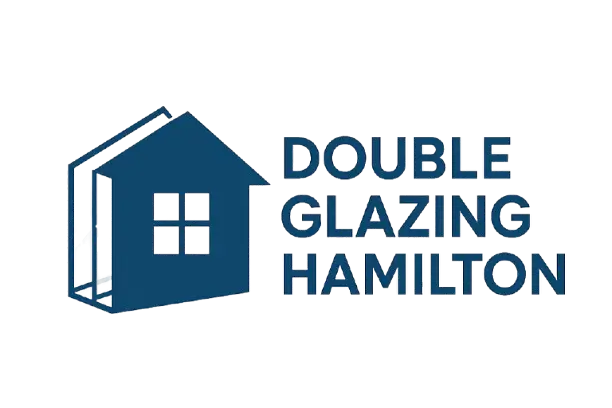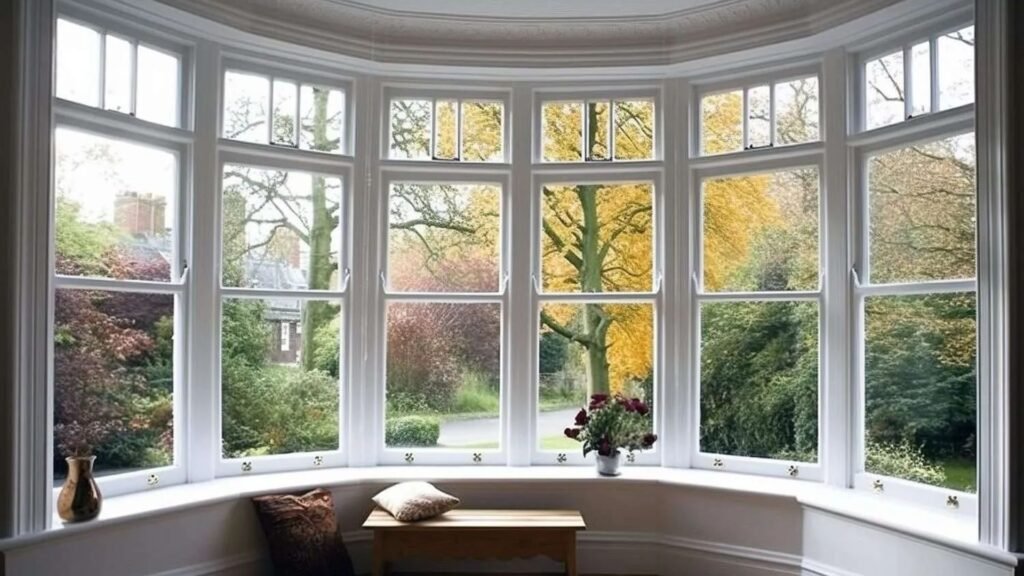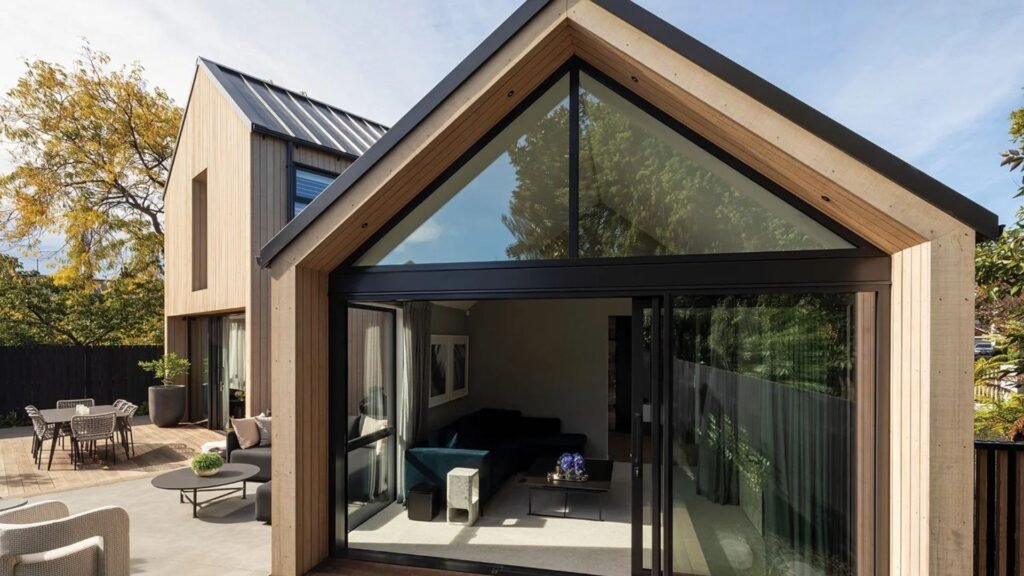Welcome to a warmer, drier, and more comfortable way of living in New Zealand, retrofit double glazing. With rising energy costs, chilly winters, and the constant battle against condensation, many Kiwi homeowners are looking for smarter ways to improve their homes without the expense of full window replacements. Retrofit double glazing offers exactly that by upgrading your existing windows with modern insulated glass units, helping you keep the charm of your home while boosting energy efficiency. In this guide, we’ll walk you through what retrofit double glazing actually is, how it works, why it’s becoming popular in NZ homes, and whether it’s the right choice for you.
Retrofit double glazing in NZ works by removing the single glass from your existing window frames and replacing it with insulated double-glass units. This process upgrades old windows without needing a full replacement, helping Kiwi homes stay warmer, reduce condensation, cut energy costs, and lower outside noise while keeping the original window frames intact.
Table of Contents
What Is Retrofit Double Glazing?
Retrofit double glazing means upgrading your current windows by swapping the single pane for an insulated glass unit (IGU) while keeping the original frame. You get two panes separated by a spacer, often with argon gas and a warm-edge spacer to cut heat loss. Seals keep moisture out. Your home looks the same, yet feels warmer, drier, and quieter. If you love your window frames but want better performance, this approach fits.
Key Points You Can Use
- You keep your existing frames.
- Installers remove the old glass and fit a made-to-measure IGU.
- Low-E coatings, gas fill, and quality seals lift thermal performance.
- The goal is comfort, lower energy use, and less condensation.
Retrofitting Vs Installing Brand-New Windows
Retrofitting
- Keeps timber or aluminium frames you already have.
- Less demolition, less waste, often faster.
- Usually lower cost than full replacement.
- Minimal change to street appeal and interior trims.
- Best when frames are sound and you want to preserve character.
Brand-New Windows
- Full replacement of frame and glass as one unit.
- Bigger step up if frames are rotten, warped, or leaky.
- Lets you choose new materials (e.g., thermally broken aluminium or uPVC).
- Higher upfront cost and more disruption during install.
- Useful when you also want design changes or larger openings.
Questions To Guide Your Choice
- Are your frames in good condition?
- Do you need a major style change?
- Is your budget set for upgrades across the whole house or room by room?
How It Differs From Standard Double Glazing
People often use “double glazing” to mean brand-new double-glazed windows. Retrofit double glazing is different because it reuses the frames you already own. That one choice affects cost, look, and time on site.
What Sets Retrofit Apart
- Frame Strategy: Retrofit reuses frames; standard double glazing ships as a new window-and-frame system.
- Installation Time: Retrofit often fits within hours per window; full replacements can take longer and may need interior and exterior finishing work.
- Appearance: Retrofit keeps heritage profiles, sashes, and trims; new units change the frame style.
- Thermal Path: Retrofit boosts glass performance right away. Full replacements can add gains from thermally broken frames and new seals across the whole unit.
- Maintenance: Retrofit focuses on glass and seals; new windows reset both glass and frame lifespan.
Why It’s A Popular Choice In NZ Homes
New Zealand homes include villas, bungalows, and mid-century builds with strong character. Many use timber joinery that owners want to keep. Retrofit double glazing matches those needs.
Reasons Kiwi Homeowners Choose Retrofit
- Heritage Appeal: You retain original sash proportions, glazing bars, and timber profiles that suit villas and character streets.
- Timber Joinery Friendly: Quality timber frames often have decades of life left. Retrofitting adds performance without losing craftsmanship.
- Cost Savings: You avoid the price of full frame replacement, scaffolding extras in many cases, and wide redecoration.
- Speed And Less Disruption: Rooms stay usable. Installers work window by window, often completing a house in days, not weeks.
- Warmer, Drier Homes: Low-E IGUs cut heat loss, reduce cold glass surfaces, and help curb condensation and mould risk.
- Noise Reduction: Two panes and a sealed airspace dampen traffic and neighbourhood noise.
- Sustainability: Reusing frames reduces landfill and the carbon footprint tied to manufacturing new units.
- Flexible Staging: You can retrofit in stages, start with bedrooms or the coldest rooms, then move through the house as budget allows.
Helpful Tips Before You Book
- Inspect Frames: Fix rot, leaks, or failed putty before glass goes in.
- Choose The Right Spec: Ask about Low-E types, argon fill, spacer quality, and laminated options for security and noise.
- Confirm Workmanship: Look for experienced installers, clear warranties, and examples of similar NZ homes they have upgraded.
- Plan Ventilation: Pair new glazing with good airflow strategies to manage indoor humidity year-round.
By understanding what retrofit double glazing is, how it compares to full replacements, and why it suits NZ homes, you can pick the path that protects your home’s character while lifting comfort and efficiency.
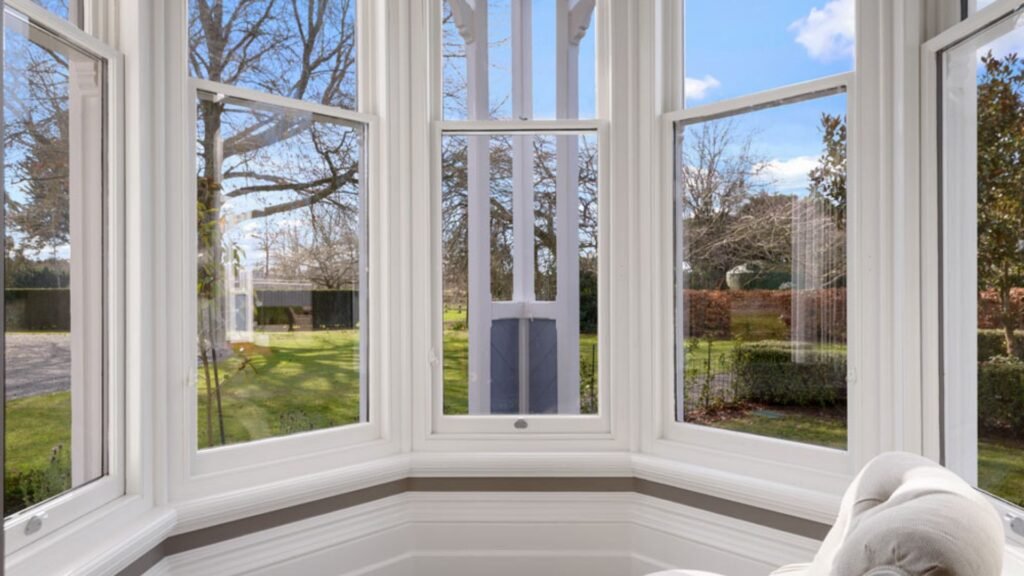
How Does Retrofit Double Glazing Actually Work?
Retrofit double glazing might sound complicated, but it’s a straightforward process designed to improve your home’s comfort without needing to replace your entire set of windows. Think of it as giving the “inside” of your window an upgrade while keeping the original frames in place. This is especially useful in New Zealand, where many homes still rely on single-pane glass that lets out heat and invites in condensation.
Assessing Existing Windows
The first step is an inspection of your current windows. An installer will check whether the frames are strong, dry, and in good condition. If the timber is rotting or the aluminium is bent, some repair may be needed before the retrofit can begin. In most cases, especially in older NZ villas with sturdy timber joinery, the frames are solid enough to work with. This assessment ensures that the investment will last and that the retrofit is done properly.
Removing Single Glass Panes
Once the frames are confirmed as suitable, the old single glass panes are carefully removed. This step requires precision, as the original frame is being preserved. Homeowners appreciate this part of the process because it allows them to maintain the look and character of their house, something that’s very important for heritage homes and bungalows throughout New Zealand.
Installing Insulated Glass Units (IGUs)
The heart of retrofit double glazing is the installation of insulated glass units, also known as IGUs. These units consist of two panes of glass separated by a sealed space, often filled with air or argon gas for better insulation. The IGUs are custom made to fit the existing frame, ensuring a snug and energy-efficient fit. At this stage, homeowners can choose from different glass options such as Low-E glass, laminated safety glass, or even tinted glass, depending on their needs for warmth, safety, or privacy.
Sealing And Finishing
After the IGUs are installed, the frames are sealed and finished to ensure the new double-glazed window is airtight and secure. Professional installers use high-quality seals to prevent drafts and moisture from getting in between the panes. The finishing touches also involve making the window look seamless, so it blends in with the home’s existing style. Whether the frame is timber, aluminium, or uPVC, the end result is a window that performs like new while retaining the charm of the original design.
Example In Older NZ Homes
Imagine a classic timber villa in Auckland or Wellington. These homes often have beautiful but draughty single-pane windows. Instead of ripping them out and losing the original character, retrofit double glazing allows the homeowner to keep those frames while significantly improving energy efficiency. The single glass is swapped out for an IGU, sealed into the old timber, and suddenly the house feels warmer in winter, quieter from street noise, and far less prone to damp and condensation.
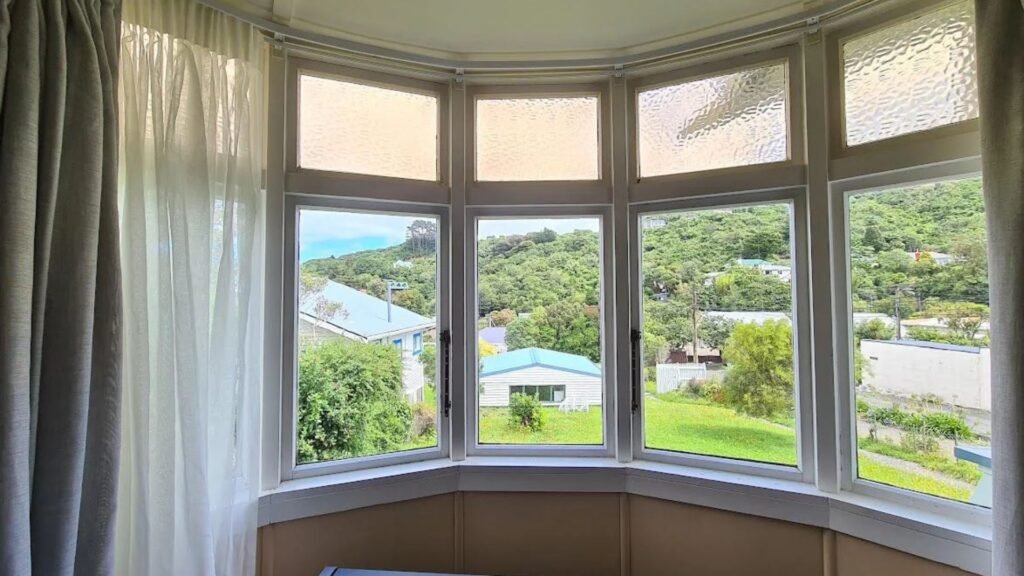
Benefits Of Retrofit Double Glazing
Energy Efficiency: Keeps Heat In, Lowers Power Bills
One of the biggest advantages of retrofit double glazing is the improvement in energy efficiency. By replacing single glass with insulated double-glass units, your windows can trap more heat inside during winter and block excess heat in summer. This reduces the need to run heaters or heat pumps as often, which directly lowers your power bills. For many New Zealand households, this can make a noticeable difference over the course of the year, especially in colder regions like Canterbury, Otago, or Wellington.
Comfort: Warmer In Winter, Cooler In Summer
Comfort is a major factor when deciding to invest in retrofit double glazing. In winter, your home stays warmer for longer because less heat escapes through the glass. In summer, the double-glass unit helps block unwanted heat from entering, keeping your rooms cooler. This creates a more stable indoor temperature all year round, so you’re not constantly adjusting heaters or fans to feel comfortable.
Noise Reduction: Quieter Living Environment
If you live near a busy road, close to schools, or in a bustling city area, retrofit double glazing can significantly reduce outside noise. The extra pane of glass combined with the sealed air gap acts as a sound barrier. This makes bedrooms quieter, living spaces more peaceful, and improves overall quality of life. Many Kiwi homeowners notice an immediate difference once their windows are upgraded.
Reduced Condensation: Less Mould And Damp
Single-glass windows often lead to condensation during colder months, especially in areas with high humidity. This moisture can cause mould, dampness, and even damage to your walls or curtains. Retrofit double glazing helps solve this problem by creating a thermal barrier between the inside and outside temperatures. Less condensation means a healthier home, reduced risk of mould growth, and better indoor air quality for your family.
Preserves Character: Keeps Existing Window Frames
A unique benefit of retrofit double glazing is that it preserves the original character of your home. Instead of ripping out old timber or aluminium frames, the process works with your existing windows. This is particularly valuable for heritage homes or older villas in New Zealand where the architectural style is part of the property’s charm. Homeowners can enjoy modern comfort without losing the traditional look of their windows.
Environmental Impact: Extends Life Of Materials, Reduces Waste
Retrofit double glazing is also a sustainable choice. By reusing the existing frames, less material ends up in landfill, and fewer new resources are required for manufacturing. This approach extends the life of your current windows while still delivering the performance benefits of double glazing. Choosing retrofit over full replacement is not only cost-effective but also a responsible option for homeowners who want to reduce their environmental footprint.
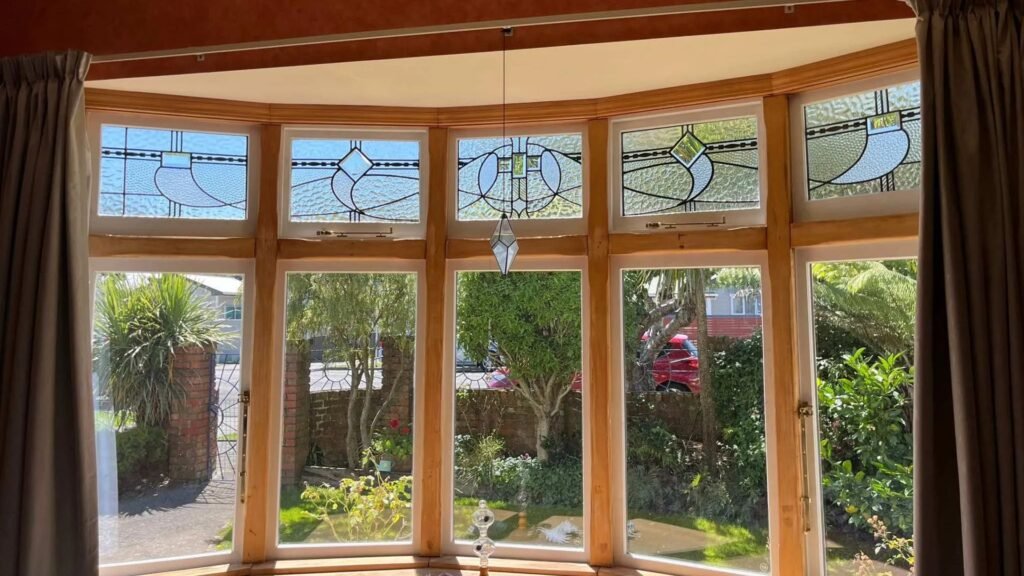
Is Retrofit Double Glazing Worth It In NZ?
When homeowners in New Zealand start exploring ways to improve warmth and energy efficiency, the big question often comes up: “Is retrofit double glazing worth it?” The short answer is yes, retrofit double glazing can be a smart, cost-effective choice for many Kiwi households. But like any home upgrade, it depends on your budget, the condition of your windows, and the type of home you live in. Let’s break down the key factors.
Average Costs In New Zealand Vs Full Window Replacement
One of the biggest advantages of retrofit double glazing is cost savings. In most cases, retrofitting is cheaper than replacing your entire window frames. A full window replacement means paying not only for the glass but also for brand-new frames, which can significantly increase the total price. Retrofit double glazing reuses your existing frames, which makes it more affordable while still delivering most of the benefits of modern double glazing. For many homeowners, this cost difference is the deciding factor.
Payback Period Through Energy Savings
Energy costs in New Zealand continue to rise, and poorly insulated homes lose heat quickly. Retrofit double glazing helps reduce heat loss, meaning you’ll rely less on heaters or heat pumps to stay warm. Over time, this leads to lower energy bills. While the exact payback period depends on the size of your home and your energy usage, many households start to see noticeable savings within a few years. It’s not just about money, it’s also about comfort and making your home easier to heat and cool.
Suitability For Different Home Types
Retrofit double glazing is particularly popular in New Zealand because of the variety of homes across the country. Old villas and bungalows often have beautiful timber frames that homeowners don’t want to replace. Retrofitting allows you to keep the character of these homes while still upgrading to modern, insulated glass. For more modern houses with aluminium frames, retrofit double glazing is also possible and can deliver similar benefits. The key is to have your frames assessed by a professional to ensure they are in good condition before proceeding.
Realistic Expectations Matter
While retrofit double glazing provides major improvements, it’s important to set realistic expectations. It won’t solve every insulation issue in your home. For example, if your roof or walls are poorly insulated, you may still notice heat loss in those areas. What retrofit double glazing does is make a significant difference to comfort, reduce condensation, cut down on noise, and help with overall energy efficiency. Think of it as one important step in creating a warmer, healthier home rather than the complete solution.
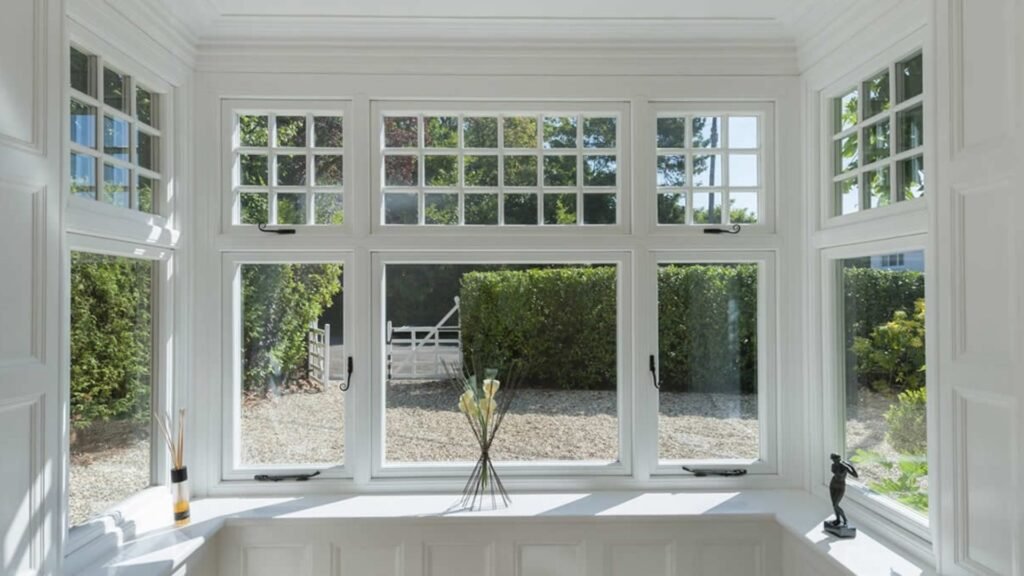
Things To Consider Before Retrofitting
Thinking about retrofit double glazing in NZ? Make smart calls before you sign a quote. Use this checklist to match your home, budget, and goals. It keeps the process simple, safe, and worth it.
Condition Of Existing Frames
- Check for soft timber, darker patches, or a musty smell. These hint at rot.
- Look for warping, gaps, or sticky sashes. Poor alignment leaks heat and lets in draughts.
- Press a screwdriver gently into suspect timber. If it sinks, plan a repair before glazing.
- For aluminium, inspect corners and joints. Make sure weep holes drain and seals aren’t brittle.
- For uPVC, look for UV fading, cracks, or twisted members.
- Ask yourself: will a repair restore strength, or is replacement smarter for long-term value?
- Good frames help the new insulated glass units seal properly. Weak frames shorten IGU life and waste money.
Glass Options: Low-E, Laminated, Tinted
Low-E
- Reflects heat back inside in winter and limits heat gain in summer.
- Choose coating strength based on climate and sun. North-facing rooms may need a different Low-E than shaded spaces.
- Ask about argon gas fill and warm-edge spacers to cut heat loss further.
Laminated
- Two panes bonded with an interlayer. Improves security and reduces noise.
- A smart pick for street-front rooms or bedrooms near traffic.
Tinted
- Reduces glare and UV. Useful for bright coastal or high-sun areas.
- Go easy on dark tints in cooler zones so you don’t lose passive solar heat.
Acoustic Interlayers
- Target low-frequency traffic rumble and high-frequency chatter.
Safety Glazing Zones
- Near doors, in bathrooms, or low windows, safety glass may be required. Ask your installer which panes need it.
Tell Your Installer Your Goals
- Warmer rooms, less noise, less glare, or all three. They can mix glass types by room.
Maintenance Requirements
Timber
- Keep paint or clear coats fresh. Seal end grain and sills.
- Re-putty or re-seal when you see hairline cracks.
Aluminium
- Keep drainage paths clear. Rinse salt build-up in coastal areas.
- Replace perished gaskets early to protect the IGU edge seal.
Hardware
- Lubricate hinges and stays. Tighten loose screws to keep a tight close.
IGU Health
- Fogging or milky haze between panes means seal failure. Ask about warranty coverage and lead times for replacements.
- Plan a simple annual check. A 10-minute walk-around prevents costly fixes later.
Building Code Compliance In NZ
Energy Performance
- Your retrofit should meet current energy goals for windows in your region. Ask for U-value and SHGC figures on the quote.
Safety Glazing
- Some locations need safety glass for impact resistance. Bathrooms, doors, and stairs are common zones.
Weather Tightness
- Flashings, sealants, and drainage must keep water out. Good details matter in coastal and high-wind areas.
Heritage And Consents
- Character homes or protected façades may need consent or specific profiles. Check with your local council before work starts.
Paper Trail
- Keep quotes, product specs, and warranties. They help with resale and insurance.
Choosing A Reliable Installer
Credentials
- Pick a specialist with a strong NZ track record in retrofit double glazing. Ask for recent local references.
Product Proof
- Request glass make-ups, spacer type, gas fill, and verified performance numbers.
- Look for documented test results and clear warranties on both glass and workmanship.
Site Assessment
- Expect a thorough inspection of frames, sills, and drainage. Quick, “one-size-fits-all” quotes are a red flag.
Detailing
- Who handles repairs to timber, new beads, colour matching, and finishing? Get it in writing.
Aftercare
- Ask about service calls, turnaround times, and what’s covered if a unit fogs.
Compare Like For Like
- Line up two or three quotes with identical specs. Price only makes sense when the glass, spacer, gas, and finishing match.
Questions To Ask
- Which rooms get Low-E and which get laminated or tinted?
- What U-value will I get after retrofit?
- How will you protect floors and furniture during install?
- What is the typical timeline per window and for the whole house?
Use these points to tailor your plan for retrofit double glazing in NZ. When frames are sound, glass choices match each room, and the installer is proven, you get warmer rooms, lower bills, and quieter spaces without replacing your whole window set.
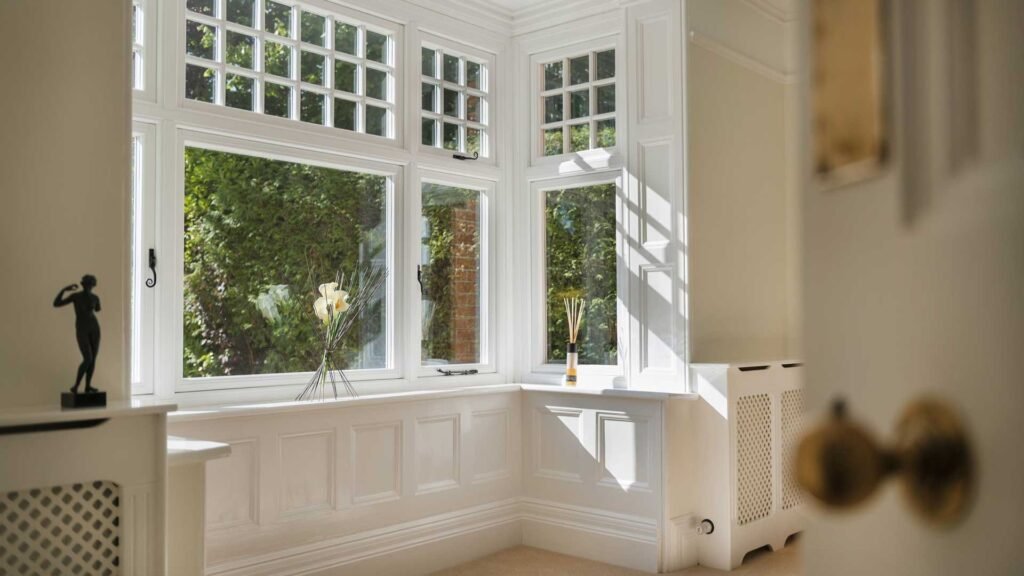
Alternatives To Retrofit Double Glazing
Not every home or budget will be the right fit for retrofit double glazing. While it is one of the most popular upgrades for Kiwi households, there are other options worth exploring. Each comes with its own benefits, limitations, and costs. Understanding these alternatives will help you decide what works best for your home’s needs.
Full Window Replacement
Full replacement involves removing the entire existing window, including the frame, and installing a completely new double-glazed or triple-glazed unit. This option is ideal for homes where the current frames are damaged, rotten, or not suited for retrofitting.
Benefits
- Provides the highest level of insulation and energy efficiency.
- Offers modern materials like uPVC or thermally broken aluminium.
- Improves the overall look and value of your property.
Drawbacks
- Significantly more expensive than retrofit double glazing.
- Longer installation times and more disruption.
For homeowners planning major renovations or building new sections, full replacement can be the most future-proof option, but it requires a higher upfront cost.
Secondary Glazing
Secondary glazing adds an extra pane of glass or acrylic on the inside of your existing window frame, creating a small air gap. It is a less invasive option that can be installed without altering the original glass.
Benefits
- Lower cost compared to retrofit or full replacement.
- Provides noticeable improvements in noise reduction and insulation.
- Preserves original windows, making it suitable for heritage homes.
Drawbacks
- Less effective than retrofit double glazing at reducing condensation.
- The appearance can be bulky if not installed neatly.
- Secondary glazing works well for homeowners wanting an affordable upgrade without committing to major changes.
Thermal Curtains And Window Films (Short-Term Fixes)
Thermal curtains and window films are quick, budget-friendly solutions designed to improve insulation temporarily.
Thermal Curtains
- Have multiple layers of fabric that trap heat indoors during winter and keep sunlight out in summer.
Window Films
- Adhesive sheets applied directly to the glass, helping reduce heat transfer.
Benefits
- Very affordable and easy to install.
- Immediate improvement in comfort.
- Great for renters who cannot make structural changes.
Drawbacks
- Only reduce heat loss slightly compared to glazing solutions.
- Films may bubble or peel over time.
- Curtains must be drawn to work effectively, which can reduce natural light.
These solutions are best used as short-term measures while saving for a more permanent upgrade.
Comparison Of Costs And Effectiveness
When comparing alternatives, cost and effectiveness play the biggest role in decision-making.
- Full Window Replacement: Highest cost, highest effectiveness. Ideal if frames are damaged or you want a complete upgrade.
- Retrofit Double Glazing: Mid-range cost, strong effectiveness. Best balance for most Kiwi homes.
- Secondary Glazing: Lower cost, moderate effectiveness. Good option if you want improvements without major renovations.
- Thermal Curtains/Window Films: Lowest cost, limited effectiveness. Useful as a temporary or supplementary fix.
Retrofit double glazing often provides the best return on investment for New Zealand homes, but the right choice depends on your budget, your home’s condition, and how long you plan to stay in the property.
Experience the benefits of warmer, quieter living. Start your retrofit double glazing journey by exploring our homepage now.
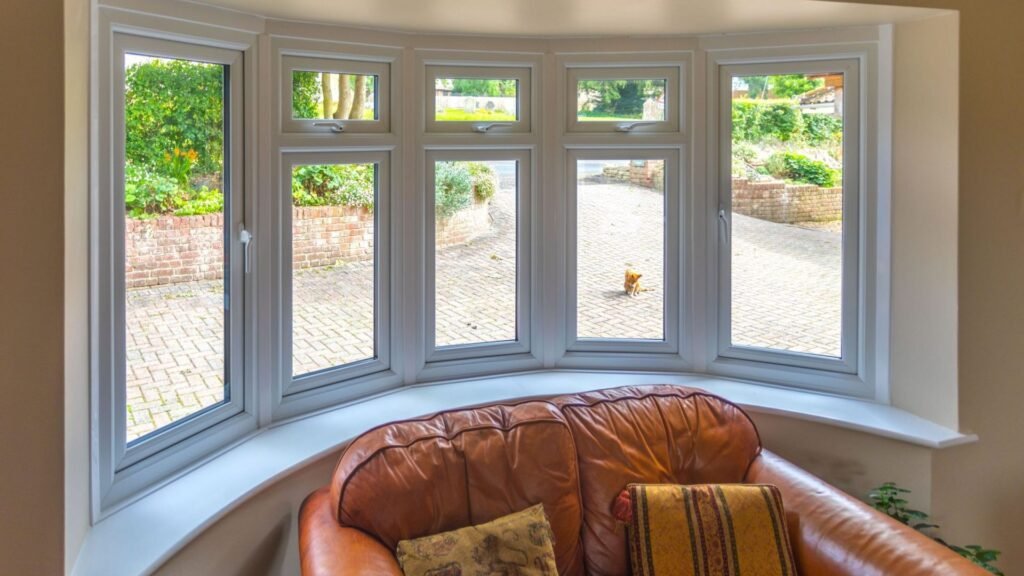
FAQs: About How Retrofit Double Glazing Works In NZ
What is retrofit double glazing?
Retrofit double glazing is the process of upgrading existing single-glass windows by installing insulated double-glass units into the same frames. This allows homeowners to enjoy the benefits of double glazing without replacing the entire window.
How does retrofit double glazing work in practice?
The single pane of glass is removed, and a new insulated glass unit (IGU) is fitted into the original frame. The unit is sealed securely, turning the old window into a double-glazed one that traps air or gas between the panes for better insulation.
Is retrofit double glazing suitable for all NZ homes?
Yes, it can be applied to most homes, including older villas, bungalows, and modern houses. However, the condition of the existing frames matters. If they are rotten or severely damaged, they may need repair or replacement before retrofitting.
What are the benefits of retrofit double glazing?
Benefits include improved energy efficiency, warmer homes in winter, cooler spaces in summer, reduced condensation, less noise from outside, and preservation of original frames in heritage homes.
How much does retrofit double glazing cost in New Zealand?
Costs vary depending on window size, glass type, and installer. On average, retrofit double glazing in NZ can cost less than a full window replacement, making it a more budget-friendly solution for many homeowners.
How long does retrofit double glazing last?
With proper installation and quality materials, retrofit double glazing can last 15–25 years or longer. Regular maintenance of the frames will also extend the lifespan of the windows.
Does retrofit double glazing reduce condensation?
Yes, it significantly reduces condensation because the double-glass unit prevents warm indoor air from directly touching the cold glass surface. This helps reduce mould and dampness in the home.
Can you retrofit aluminium windows as well as timber?
Yes, both timber and aluminium windows can often be retrofitted. Timber is common in older NZ homes, while aluminium is more common in modern properties. The installer will assess the frame type to recommend the best approach.
How long does the installation process take?
The time depends on the number of windows and their condition. A single window can often be completed in a few hours, while a whole house might take several days. Installers usually work room by room to minimize disruption.
Is retrofit double glazing worth it in NZ’s climate?
Yes, given New Zealand’s cool winters and high energy costs, retrofit double glazing is a smart investment. It improves comfort, reduces heating bills, and adds value to the property while maintaining the home’s character.
Conclusion
Retrofit double glazing is a practical and cost-effective solution that fits perfectly with the needs of New Zealand homes, offering a smart way to upgrade without the expense of full window replacements. By replacing single panes with insulated glass units, homeowners can enjoy warmer rooms during winter, cooler interiors in summer, noticeable energy savings, and a more comfortable living environment all year round. Beyond comfort, retrofit double glazing also helps reduce condensation and noise, while preserving the charm of existing window frames, which is especially important for heritage or character homes. If you are considering this upgrade, the best next step is to arrange a professional assessment of your windows to determine suitability and options. From there, you can request a free quote, compare providers for the best value, or even start with one room to experience the difference before committing to a full home upgrade.
